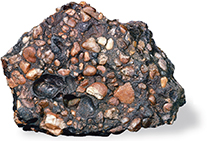Figure 16 Colorful layers of sandstone, like those in this Utah canyon, formed over millions of years as water and wind laid down sediment.

Sedimentary Rock
The process of weathering breaks down rock at Earth's surface, turning it into smaller pieces. Some rocks are dissolved by rainwater. Other rocks are broken apart by water, wind, or ice. (Weathering will be covered in detail in Chapter 23.)
Sediment consists of small, solid pieces of material that comes from rocks or living organisms. Minerals dissolved in water are also sediment. As in Figure 16, sediment is often carried away by running water or wind to a new location, where it is deposited in layers. This process occurs mainly in the oceans, but it also occurs on river beds, on the bottoms of lakes, and in deserts. Rivers carry sand, mud, and dissolved minerals into the oceans, where these materials are deposited as layers of sediment on the ocean floor.
As more and more sediment piles up, the pressure causes the deeper sediment to be compressed. Dissolved minerals in the water seep into the space between particles of sediment and form a kind of cement. A sedimentary rock is a rock that forms over time as sediment is squeezed and cemented together.  Geologists classify sedimentary rocks into three main groups according to how they form: clastic rocks, chemical rocks, and organic rocks.
Geologists classify sedimentary rocks into three main groups according to how they form: clastic rocks, chemical rocks, and organic rocks.
Clastic Rock Sedimentary rocks that form from the broken fragments of other rocks are called clastic rocks. The fragments that make up clastic rocks are usually held together by cement. Otherwise, the fragments would fall apart, like a handful of sand. Clastic rocks are classified mainly based upon the average size of the fragments that they contain. If the rock fragments consist of gravel and pebbles, then the rock is called conglomerate. Like the example in Figure 17, conglomerate usually contains rounded pieces that have been worn smooth in a river or stream. In contrast, breccia is a clastic rock made up of sharp-edged fragments, such as those produced in a volcanic explosion.
Other clastic rocks are made of smaller particles. Sandstone is formed from grains of sand. (Sand itself is made up mostly of small particles of quartz.) If the sediment is primarily mud or silt, the clastic rock is called mudstone. The clay minerals that form mudstone are flat minerals, similar to mica. If these clay minerals are aligned so that the rock can split into sheets, the rock is called shale.
Figure 17 Conglomerate is a sedimentary rock in which rounded pieces of other rocks are cemented together. Classifying What type of sedimentary rock is conglomerate?





